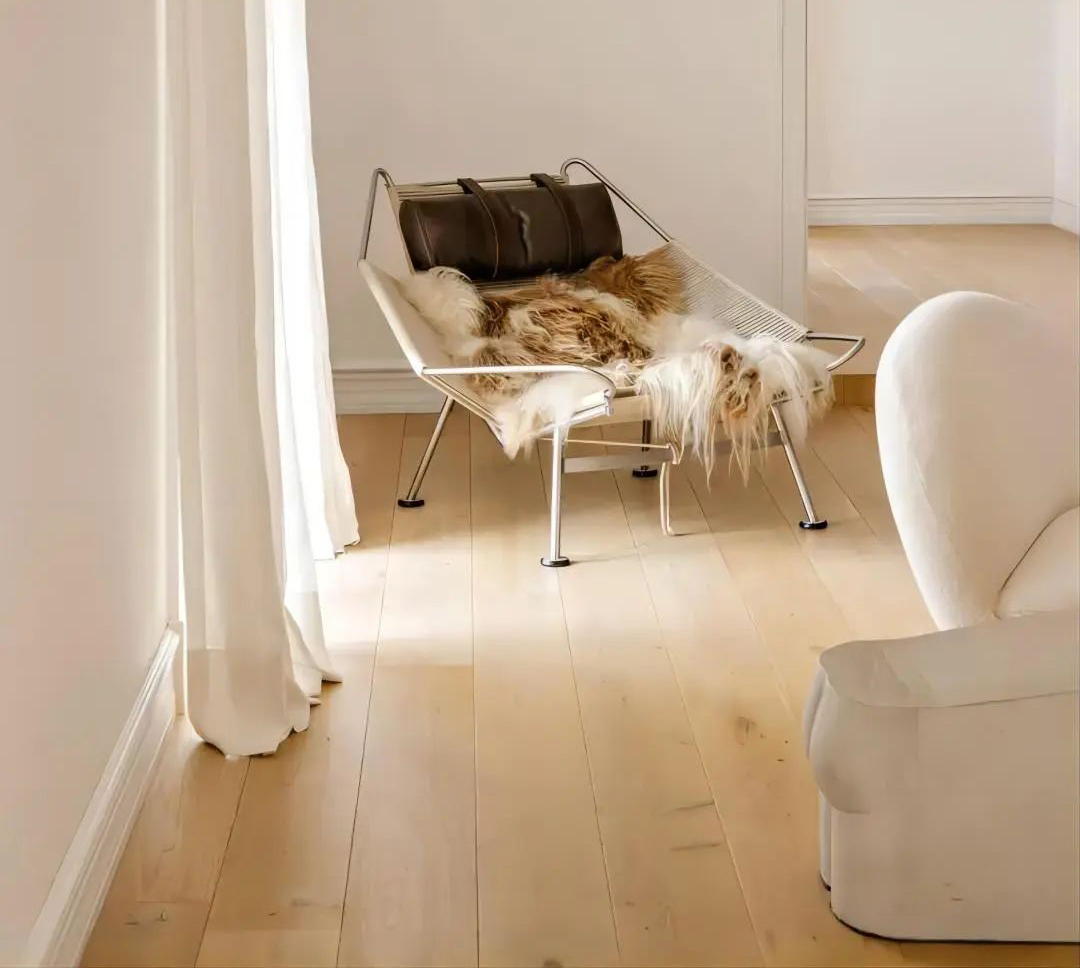Wooden flooring is very comfortable to step on and is an essential floor decoration material for home decoration. However, in summer, there is a lot of rain and a humid climate, coupled with not paying attention to maintenance, which may lead to mold and blackening. Let's take a look first. Is the moldy and black flooring at home related to these factors?
What are the reasons for the moldy and black floor?
(1) Sprinkled water but didn't wipe dry
Sometimes when the hands are slippery, the water in the cup spills onto the floor. If there is less water, leave it unattended and let the floor air dry naturally, or if there is too much water but it is not completely wiped dry, the water will seep into the interior of the wooden floor over time, which may lead to mold.
(2) The mop is too wet when mopping the floor
When mopping the floor, the mop is relatively wet. After mopping the floor, there is a lot of water left on the ground, which will seep into the interior through the gaps of the wooden floor. Over time, it is easy to breed mold, making the wooden floor easy to mold and turn black. The interior of the wooden floor may also rot.
(3) Poor drying of the floor after soaking in water
After serious situations such as water pipe leakage occur, the wooden floor is soaked in water, and water penetration can be severe. If you only dry the surface of the water at this time, it is likely that you are planning to replace the floor with a new one.
If the situation is not very serious after soaking in water for a long time, you can use a vacuum cleaner to dry the moisture on the floor and in the gaps. If there is a baseboard, remember to remove it and then ventilate and dry it.
If the situation is very serious after soaking in water for a long time, after absorbing water vapor, the floor needs to be removed and dried (the solid wood floor needs to be staggered into a well shape after being removed, and dried in a cool and windy place). If the drying work after soaking in water is not done well, the wooden floor will have a lot of moisture left inside, which can easily become moldy, black, and even rot.

(4) The ground did not dry thoroughly when laying the floor
Sometimes, due to workers rushing to work, the floor may have been laid before it has fully dried, resulting in a lot of water vapor inside the wooden floor. Either it seeps into the floor or it seeps out from the cracks next to the wall, making the wooden floor next to the wall prone to moisture, mold, and blackening.
Why do wooden floors become moldy and black when they are damp?
Because in relatively dry environments, there are actually many fungal hyphae floating in the air, and at this time it still has no place to settle; When the temperature is suitable and the environment is humid, these molds begin to search for "shelter" for mass reproduction and growth. At this time, they will "settle" in the damp areas of the floor and breed, causing mold to change; But there are four factors that can cause floor mold, namely mold, host (such as residue from food that has been attached to the ground for a long time, etc.), humidity, and temperature.
How to deal with moldy and black floors? This mainly depends on the degree of mold on the floor!
(1) Small mold spots appear on the surface
Some small mold spots have appeared on the floor, which is relatively easy to handle. You can purchase a floor mold remover to wipe, or you can use warm bleach and water in a 1:3 ratio to make a cleaning agent, and use a soft cloth dipped in the cleaning agent to wipe.
You can also use sandpaper to polish it clean with appropriate force, then wipe it with a towel, and then spray the same color paint or coating again.
After cleaning, in addition to paying attention to subsequent waterproofing, the wooden floor can also be coated with anti-corrosion wood oil, which can better protect the floor. Also pay attention to regular ventilation, as air circulation is more conducive to drying the ground.
(2) The area of mold spots increases and the floor turns black
When the moldy area is about to flake and the color is gradually turning black, it indicates that the interior of the wooden floor has moldy. It is useless to clean the surface at this time, and only the damaged floors can be replaced, and attention should be paid to waterproof work.
(3) The floor becomes moldy and black in blocks
The large area of wooden flooring that has become moldy, black, or even rotting is no longer salvageable and can only be replaced. Moreover, this situation indicates that the moisture under the floor is not as heavy as usual, otherwise the water leakage situation is too serious. At this time, besides completely reinstalling the floor, it is best to also investigate the reasons in detail. If you cannot find it yourself, you can find a professional to check.

How to prevent the floor from getting moldy and turning black?
1. Install in a suitable space
If it is a very humid place, you can choose to make other floors, such as tiles, floor tiles, etc. Wooden grain bricks are a good choice, which have both wooden texture and moisture resistance and durability. In places like bathrooms, there should be no one laying wooden floors, and kitchens are not suitable for laying wooden floors.
2. Choose high-quality products
Then, when choosing wooden flooring, try to choose products with good quality, mold and antibacterial properties, and waterproof treatment. After confirming that the quality is no problem, proceed with installation. Wood flooring with poor quality or high moisture content will not be durable. The moisture content of general wooden flooring is maintained at 8-14%, which is a normal state. However, the environmental conditions in the north and south are different, and the specific values will also vary.
3. Drying and waterproofing are prerequisites for installation
When installing wooden flooring, it is necessary to ensure that the ground is dry and moisture-proof measures are taken, as well as the partition and waterproofing of bathrooms and rooms.
4. Regular maintenance is required in the future
Regular maintenance should be carried out on the wooden floor afterwards. Applying oil and wax can prevent the floor from drying and cracking. After small scratches appear on the wooden floor, waxing and leveling can maintain aesthetics and reduce the possibility of water seepage.
5. Maintain dryness and hygiene, regularly remove bacteria and mold
In addition to sprinkling water and wiping it dry in a timely manner, mops that mop the floor should be wrung dry to reduce the moisture in contact with the wooden floor. In addition, regular cleaning should also be carried out to avoid creating an environment for mold growth. Regularly carry out sterilization and mold removal work, dilute with mild disinfectant to make cleaning agents, and clean wooden floors, especially at corners and skirting lines. Timely sterilization can reduce mold formation.
The above are the reasons and preventive measures for moldy and black flooring. Prevention is better than supplementation afterwards. In order to avoid mold and blackening of wooden flooring, attention should be paid to purchasing and installing wooden flooring.